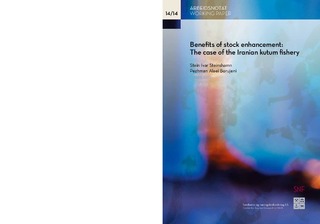Benefits of stock enhancement: The case of the Iranian kutum fishery
Working paper

Åpne
Permanent lenke
http://hdl.handle.net/11250/279037Utgivelsesdato
2014-12Metadata
Vis full innførselSamlinger
- Working papers (SNF) [809]
Sammendrag
Harvesting of the fish resources as an economic activity, which is strictly tied to biological
matters, needs to be modeled proficiently through bioeconomic analysis. In this study, a
bioeconomic age-structured model is used to analyse the profitability of Kutum fishing in
Iranian coastal waters of the Caspian Sea. Dwindling population of this species has been
revived through an enhancement programme, since 1982 in southern Caspian areas by Iranian
Fisheries Organization (IFO). Biological age-structured models in this paper were used to
estimate the catch amount under two different hypotheses of Beverton-Holt and Ricker about
stock-recruitment relationship. Considering the effects of the enhancement programme on
recruitment and catch and also on the fishing activity costs, the net present value of the
profits from fishing activity is calculated economically. The results showed a significant
positive effect of the programme on profitability. Finally, the effect of fishing mortality
adjustment, as a management tool, on profitability is also evaluated and it is shown that the
reduction in fishing mortality causes a consequent increase on the NPV of profits from
fishing activity. According to the results, one can consider the enhancement programme as a
valuable addition to good management for the purpose of increasing economic performance
when combined with appropriate management adjustments; in our case: reduction of the
fishing mortality.